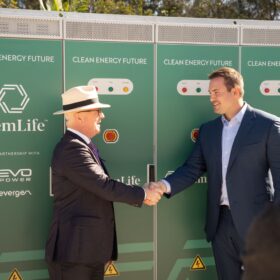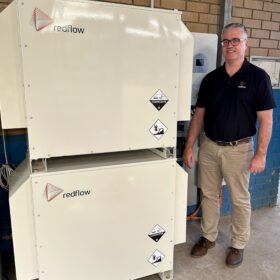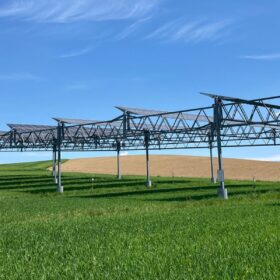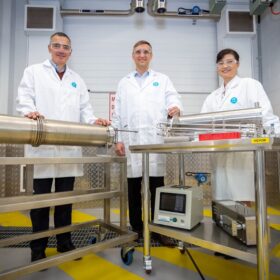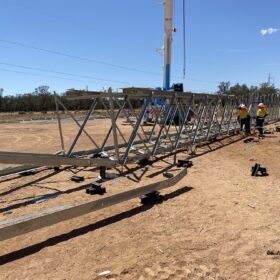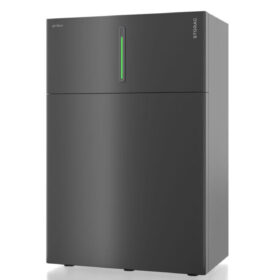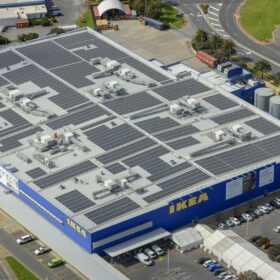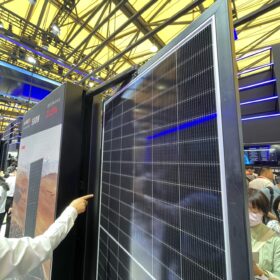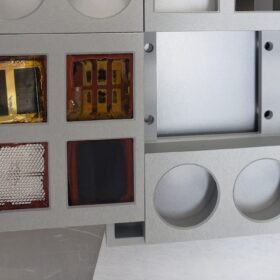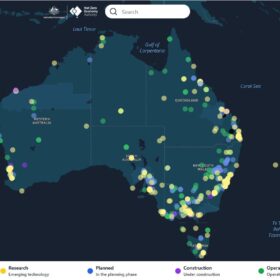‘Resort’ style retirement villages set up own VPP program
GemLife, which describes itself as “luxury resort living for the over-50s,” has set up its own Virtual Power Plant (VPP), and is set to invest $75 million in coming years to rollout the VPPs across more than 10,000 homes in its property portfolio on Australia’s east coast.
Redflow commissions 30 kWh flow battery for Brisbane Council
Queensland flow battery company, Redflow, has commissioned a 30 kWh zinc-bromine flow battery for the Brisbane City Council.
Agrivoltaics can mitigate effects of drought
A new study by the University of Hohenheim shows that shading from PV systems can improve agricultural yields, especially in dry periods, but additional research is needed.
CSIRO gets $10 million to build portable hydrogen generator
Australia’s national science agency will seek to the address some of the challenges associated with storing and transporting hydrogen by developing an off-grid, portable hydrogen generator designed to recover the zero-emissions fuel from a liquid carrier at the point of consumption.
Minister provides stamp of approval for VNI West powerline plan
The Victorian government has signed off on a preferred development plan for the contentious VNI West transmission project that will connect the Victorian and New South Wales electricity grids and promises to unlock upwards of 3.4 GW of new renewable generation capacity.
German manufacturer unveils 10 kWh residential redox flow battery
Prolux Solutions has developed a redox flow battery with a charging and discharging capacity of 4 kW and 5 kW of peak power. It is designed to be coupled with PV systems in homes with high consumption profiles.
Weekend read: the cells of the future
The annual SiliconPV Conference came to TU Delft in the Netherlands in April, and offered an important health check for the science and technology behind solar energy. pv magazine was on site to hear the latest from researchers reaching for higher efficiency through tandem cells and other innovations; looking to understand and mitigate cell degradation mechanisms; and working to cut down solar technology’s consumption of rare and expensive materials.
Epic Energy launches Australia’s largest commercial microgrid
Australia’s largest grid-connected urban microgrid has been officially commissioned with a new rooftop solar-powered system atop Swedish homewares giant Ikea’s Adelaide store already delivering more than 70% of the store’s energy needs and providing grid support for the South Australian network.
Longi launches 590 W TOPCon solar panel with 22.8% efficiency
The new series comes in seven versions, with power outputs between 560 W and 590 W. The power conversion efficiency ranges between 21.7% and 22.8%
NASA makes unusual discovery while testing perovskite solar cells in space
US space agency NASA has discovered that perovskite solar cells tested in space exhibit less degradation than reference devices tested on Earth. The agency acknowledged that it is uncertain about the specific factors in the space environment that contributed to the superior performance of the perovskite absorber film.
